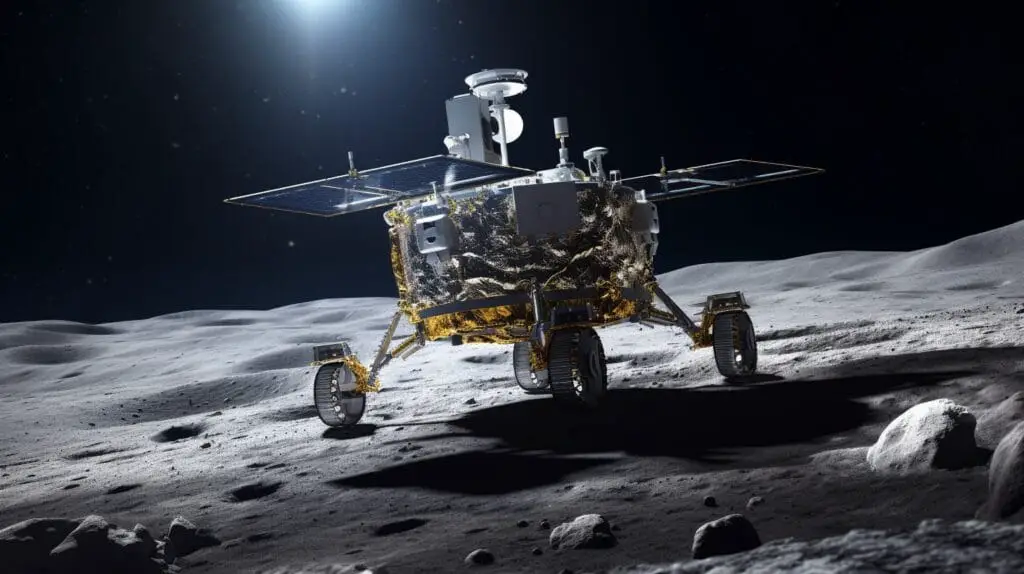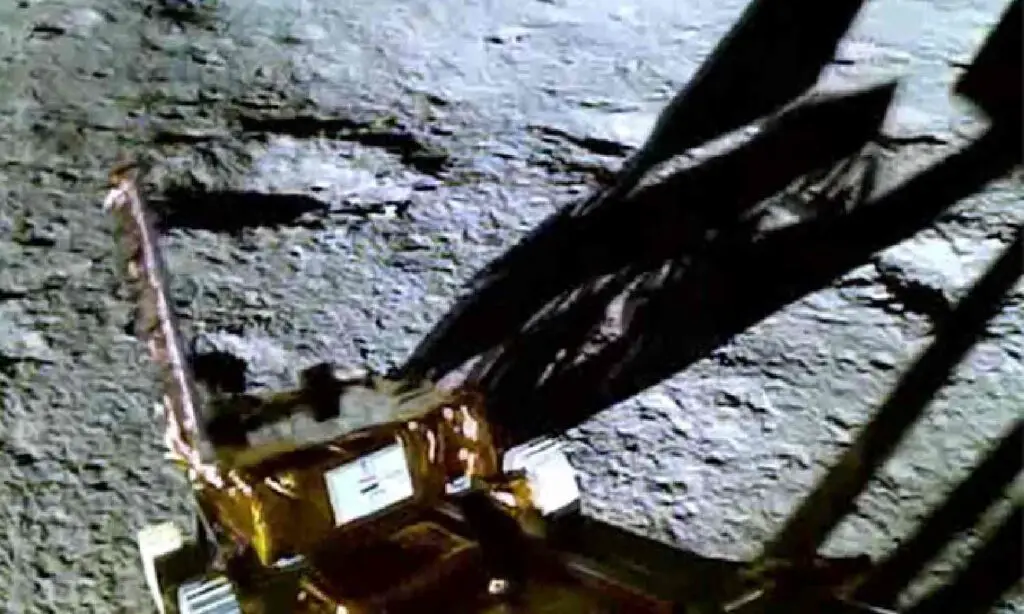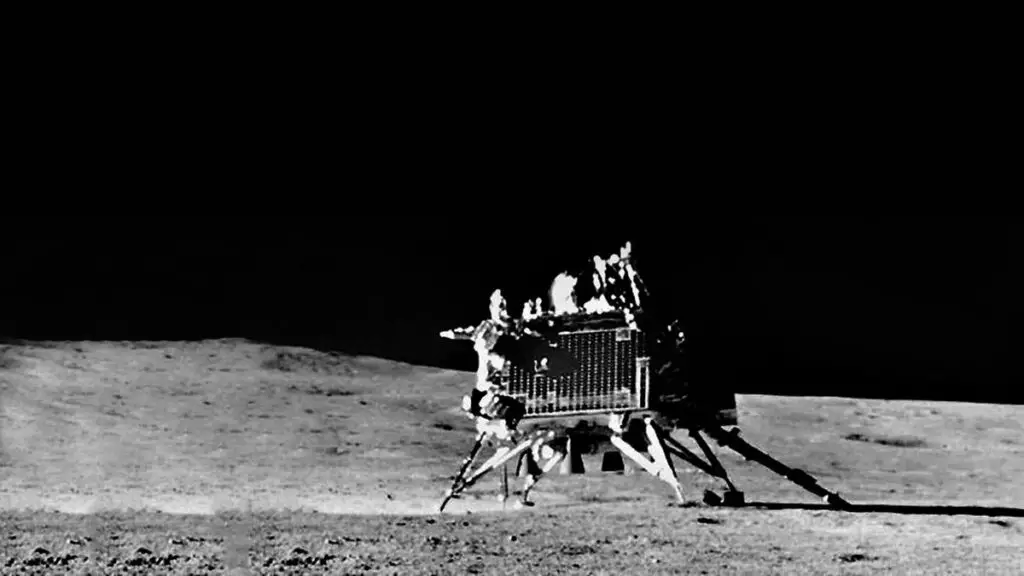Chandrayaan-3 Results: Vikram Lander Generates Lunar Dust and Ejecta Halo
The Vikram Lander of Chandrayaan-3 captured in an image taken by the Pragyan Rover’s navigation camera reveals its presence on the moon’s surface. This historic touchdown on August 23 at the moon’s south pole resulted in the generation of an impressive ‘ejecta halo’. A recent study conducted by scientists from NRSC/ISRO estimated that approximately 2.06 tonnes of lunar epi regolith, the loose surface material, were ejected and displaced over an area of 108.4 m² surrounding the landing site.
ISRO shared these exciting findings through their official X account, formerly known as Twitter. These results were also published in an article called “Characterisation of Ejecta Halo on the Lunar Surface Around Chandrayaan-3 Vikram Lander Using OHRC Imagery” in the Journal of the Indian Society of Remote Sensing on October 26.

Researchers from ISRO’s National Remote Sensing Centre (NRSC) based in Hyderabad, including Swati Singh, Prakash Chauhan, Priyom Roy, Tapas R. Martha, and Iswar C. Das, contributed to the article’s abstract. They explained that during the descent stage thrusters and landing process, a significant amount of lunar epi regolith material was ejected, resulting in a reflectance anomaly, otherwise known as an ejecta halo. By comparing high-resolution panchromatic images captured by the Orbiter High-Resolution Camera (OHRC) on Chandrayaan-2, obtained both before and after the landing, they characterized this ejecta halo as an irregular bright patch surrounding the lander. The authors estimated that the lunar epi regolith ejecta covered an area of approximately 108.4 m² due to the landing sequence, with an estimated weight of 2.06 tonnes.
India achieved a significant milestone by becoming the fourth country to successfully land a spacecraft on the moon. Furthermore, it became the first nation to touch down in the polar region with the successful soft landing of Chandrayaan-3’s lander module, carrying the Pragyan Rover, on August 23. Since their arrival on the moon’s surface, Vikram and Pragyan Rover have conducted various in-situ measurements. These measurements included confirming the presence of sulfur in the region and detecting minor elements, among other significant findings.

Vikram accomplished another remarkable feat during its mission as it successfully performed a hop experiment. Following a command, the lander fired its engines, elevating itself by approximately 40 cm and landing safely at a distance of 30-40 cm away. After completing one lunar day, equivalent to 14 Earth days, the lander and rover entered sleep mode. Unfortunately, efforts to wake them up have been unsuccessful thus far.
In conclusion, the Chandrayaan-3 mission’s Vikram Lander left an indelible mark on the lunar surface, generating lunar dust and forming a significant ejecta halo. The scientists from NRSC/ISRO have made substantial progress in characterizing and understanding these phenomena. The mission’s success not only solidifies India’s position in space exploration but also contributes to our understanding of the moon’s composition and geological processes. Despite the current slumber of Vikram and Pragyan Rover, the data they have collected thus far has been invaluable, opening up exciting possibilities for future lunar exploration.


